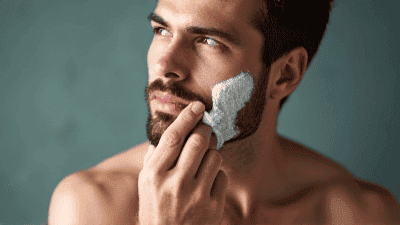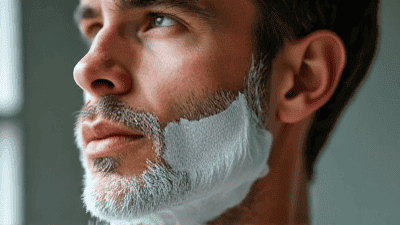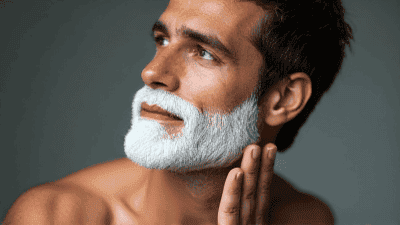Mastering the Art of Shaving: Achieving a Smooth and Comfortable Shave
Shaving is a daily ritual for many men and women around the world. While it may seem like a straightforward task, achieving a smooth and comfortable shave involves technique, the right tools, and a bit of preparation. In this comprehensive guide, we will explore everything you need to know about mastering the art of shaving. From understanding your skin type to choosing the right products and techniques, you will be well-equipped to achieve a flawless shave every time.

Understanding Your Skin and Hair
Before you dive into the world of shaving, it's essential to understand the unique characteristics of your skin and hair. Different skin types require specific care and attention, and recognizing these differences can help you achieve better results.
Skin Types
Normal Skin: Characterized by an even tone and elasticity, normal skin typically experiences few issues. However, sensitivity can still occur, especially during shaving.
Oily Skin: Oily skin produces excess sebum, leading to shine and an increased likelihood of acne. When shaving, it is essential to keep oil levels in check to prevent clogged pores.
Dry Skin: If your skin feels tight or flaky, you likely have dry skin. This skin type can be more sensitive and prone to irritation during shaving, requiring extra moisturizing products.
Sensitive Skin: This skin type may react negatively to various products, leading to redness and irritation. Individuals with sensitive skin need to be particularly cautious when choosing shaving products and techniques.
Hair Types
Fine Hair: Fine hair is thin and soft, which may result in a less noticeable stubble but can also mean a higher likelihood of ingrown hairs.
Medium Hair: Medium hair is the most common type, offering a balance between manageability and thickness.
Coarse Hair: Coarse hair typically requires stronger products and techniques for effective shaving due to its thickness and untamed nature.
Understanding your skin and hair types helps you customize your shaving routine for optimal results.
Tools of the Trade

To achieve a smooth shave, you need the right tools. The following are essential items to include in your shaving kit:
1. Razor
Choosing the right razor is crucial for a smooth shave. Various types of razors are available, including:
Safety Razor: A safety razor features a blade encased in a protective guard, reducing the chances of cuts. It is an excellent choice for beginners and experienced shavers alike.
Straight Razor: This traditional razor requires skill and practice but offers a very close shave. Straight razors demand maintenance but can last a lifetime with proper care.
Cartridge Razor: These disposable razors are user-friendly and convenient, featuring multiple blades for a comfortable shave. However, they may lead to irritation for sensitive skin.
2. Shaving Cream or Soap
A quality shaving cream or soap provides lubrication and hydration to the skin while preparing it for shaving. It should create a rich lather that protects the skin from the blade. Here are some popular options:
Foam Creams: Easy to apply, these creams often come in a pressurized can and create a light foam. While convenient, they may not provide the best protection.
Traditional Shaving Soaps: These require the use of a brush, but they produce a thick, luxurious lather that provides excellent protection and hydration.
Gels: Shaving gels are transparent, making them useful for precise shaving around facial hair. They typically offer a good grip, but may not provide as much lubrication as creams or soaps.
3. Shaving Brush
A shaving brush is used to lather shaving cream or soap, helping to exfoliate the skin and lift the hair for a closer shave. Brushes come in different materials:
Badger Hair Brushes: Known for their softness and ability to hold water, badger hair brushes create a rich lather.
Bristle Brushes: These are stiffer and provide a more vigorous exfoliation. They may be less luxurious but are effective for scrubbing and lathering.
Synthetic Brushes: A more affordable option, synthetic brushes often mimic the properties of natural hair brushes without the expense.
4. Aftershave
Aftershave products help soothe and hydrate the skin after shaving. They can come in various forms, including gels, balms, and lotions. Some popular options include:
Cooling Balms: These products contain menthol to provide a refreshing sensation and calm irritation.
Alcohol-based Aftershaves: While these can be effective in disinfecting cuts, they can also cause dryness and irritation.
Hydrating Gels: These are formulated to moisturize the skin, reducing post-shave redness and promoting healing.
5. Pre-Shave Oil
Pre-shave oil is an optional but beneficial product that can enhance your shaving experience. It provides an additional layer of protection, helping to soften hair and moisturize the skin before shaving.
Preparing for a Shave
Preparation is key to achieving a smooth and comfortable shave. Follow these steps to prepare your skin and hair before shaving:
1. Hydrate Your Skin
Begin by hydrating your skin and hair. The best time to shave is after a warm shower or bath when your pores are open, and your hair is softer. If you do not shower beforehand, use a warm damp towel to wrap your face for a few minutes to achieve similar results.
2. Exfoliate
Exfoliating helps remove dead skin cells and prepares the skin for shaving. It can also reduce the likelihood of ingrown hairs. Use a gentle facial scrub or an exfoliating glove to prepare your skin, focusing on the beard area.
3. Apply Pre-Shave Oil
If you choose to use pre-shave oil, apply a few drops to your fingertips and massage it into your beard and the skin underneath. This helps to further soften the hair, making it easier to shave.
4. Lather Up
Using your shaving brush, create a rich lather with your chosen shaving cream or soap. Applying with a brush not only helps create a luxurious lather but also lifts the hairs, allowing for a closer shave. Use circular motions to work the product into your beard area and leave it on for a minute to further soften the hair before shaving.
Shaving Techniques for a Smooth Finish

Now that you have prepared your skin properly, it’s time to shave. The following techniques will help ensure a smooth and comfortable shave:
1. Choose Your Blade
Regardless of the type of razor you choose, make sure it is sharp. Dull blades tug at the hair rather than cutting it cleanly and can lead to irritation and cuts. If you are using a safety razor or straight razor, keep your blades sharp by changing them regularly.
2. Use Gentle Pressure
When shaving, apply light pressure and let the razor do the work. Pressing too hard can lead to nicks, cuts, and irritation. Maintain a steady hand and work slowly to ensure precision.
3. Shave in the Direction of Hair Growth
Shaving with the grain (in the direction of hair growth) helps reduce the chances of irritation and ingrown hairs. It may take longer to achieve a completely smooth look, but it is gentler on your skin. If you want a closer shave, you can follow up with a second pass against the grain, but be cautious, especially if you have sensitive skin.
4. Rinse Frequently
After a few strokes, rinse your razor under warm water to remove hair and cream buildup. Drugstore razors often have a cleaning feature; make use of it to ensure the blade remains free from debris.
5. Take Your Time
Rushing through your shave can lead to mistakes and irritations. Take your time to ensure every area is covered and that you maintain a smooth stroke. If you need to adjust your grip or angle, do so slowly and carefully.
6. Care for Problem Areas
Certain areas of the face, such as the neck and under the chin, can be trickier. Use shorter strokes and avoid over-shaving or pressing too hard in these areas to reduce irritation.
Post-Shave Care
After you achieve a smooth shave, it's crucial to take steps to care for your skin. Proper post-shave care will help soothe and protect your skin, preventing irritation and promoting healing.
1. Rinse Your Face
After shaving, rinse your face with cool water to help close your pores and soothe your skin.
2. Apply Aftershave
Choose a suitable aftershave product based on your skin type. Gently pat the aftershave onto your face using your hands, avoiding harsh rubbing that can irritate freshly shaved skin. Allow the product to absorb fully.
3. Moisturize
If your aftershave doesn't provide sufficient hydration, follow up with a moisturizer. Look for a product formulated for your skin type to help keep your complexion hydrated and promote healing.
4. Treat Any Nicks or Cuts
If you experience any nicks or cuts, apply a small amount of antiseptic or styptic pencil to the affected area to disinfect and stop any bleeding.
Troubleshooting Common Shaving Issues

Even the most experienced shavers may encounter issues from time to time. Here are solutions for common shaving problems:
1. Razor Burn
Razor burn manifests as redness or irritation after shaving, often caused by friction or using a dull blade. To alleviate razor burn:
- Use a cold compress on the affected area.
- Apply soothing aloe vera gel or a balm designed for post-shave irritation.
- Make sure to exfoliate regularly to keep the skin smooth and free from dead skin cells.
2. Ingrown Hairs
Ingrown hairs occur when hair follicles become trapped beneath the skin. To prevent and treat them:
- Exfoliate regularly and use gentle scrubs.
- Use a sharp blade to avoid tugging at the hair.
- If you notice ingrown hairs, use a sterile needle to gently lift them from the skin and avoid aggressive scratching.
3. Nicks and Cuts
Even the best shavers can occasionally nick their skin. To minimize the impact:
- Apply pressure with a clean cloth to stop bleeding.
- Use a styptic pencil or antiseptic to prevent infection.
4. Dry or Flaky Skin
If you notice that your skin feels dry or flaky after shaving, consider adjusting your routine:
- Switch to a moisturizing shaving cream to hydrate your skin while shaving.
- Ensure that you are using a solid post-shave moisturizer that fits your skin type.
Advanced Shaving Techniques
If you're ready to elevate your shaving routine, consider experimenting with advanced techniques and tools:
1. Straight Razor Shaving
Using a straight razor offers a close and traditional shaving experience. Here are some tips for mastering straight razor shaving:
- Practice: Start slowly and practice your technique on non-sensitive areas before moving to delicate areas.
- Use Proper Angles: Hold the razor at a 30- to 45-degree angle to the skin for the best results.
- Maintenance: Straight razors require regular stropping and honing to maintain sharpness.
2. Shaving with a Double-Edged Razor
Double-edged razors provide a closer shave and are often more cost-effective in the long run. Consider these tips:
- Learn Blade Rinse Techniques: Due to the straight edge of double-edged razors, rinse often to keep the blade clear of hair.
- Experiment with Different Blades: There are various double-edge blades available, and some may work better for you than others. Keep trying until you find your perfect match.
3. The Wet Shave Method
Wet shaving utilizes hot water and a brush to prepare the area for a nourishing and comfortable shave:
- Hot Towel Treatment: Before applying shaving cream, wrap a hot and damp towel around your face for a pre-shave experience that softens hair and opens pores.
- Follow with a Traditional Lather: Use a quality brush to create lather with shaving soap that provides superior hydration.
Maintaining Your Shaving Tools
Proper maintenance of your shaving tools can extend their lifespan and provide a better shaving experience:
1. Razor Maintenance
- Clean Your Razor: Regularly rinse your razor after each use to remove hair and product buildup. For safety razors, remove the blade for cleaning.
- Store Safely: Store your razor in a dry place to avoid rust and maintain blade sharpness.
2. Shaving Brush Maintenance
- Clean and Rinse: After each use, rinse your shaving brush thoroughly to remove soap residue.
- Dry Properly: Store brushes upright or hang them to dry completely to avoid moisture buildup.
- Regular Deep Cleaning: Consider deep cleaning your shaving brush once a month with a gentle shampoo or brush cleaner.
3. Equipment Replacement
- Change Blades Regularly: Replace razor blades after 3-5 shaves or when you notice tugging.
- Inspect Tools: Regularly check your razor, brushes, and shaving devices for wear and tear, replacing them as needed.
Choosing the Right Shaving Products
Selecting the right products is essential for achieving a comfortable shave. Here are some popular options and recommendations for shaving products:
1. Shaving Creams and Soaps
- Proraso Shaving Soap: This Italian classic is known for its rich lather and nourishing ingredients.
- Taylor of Old Bond Street Sandalwood Shaving Cream: A luxurious cream that provides a smooth glide and an excellent scent.
2. Aftershaves and Balms
- Nivea Men Sensitive Post Shave Balm: A soothing balm ideal for sensitive skin, providing hydration and comfort.
- Clubman Pinaud After Shave Lotion: A classic option known for its refreshing properties.
3. Shaving Oils
- The Art of Shaving Pre-Shave Oil: A pampering oil providing additional lubrication for a smoother shave.
4. Razors
- Merkur 34C Heavy Duty Safety Razor: A popular choice for beginners, offering a balance of ease of use and effective shaving.
- Feather High-Stainless Double Edge Razor Blades: Known for their sharpness and precision, they are favored by seasoned shavers.
Conclusion
Mastering the art of shaving is a journey that involves understanding your skin and hair, choosing the right tools, and perfecting techniques. As you refine your shaving routine, you will discover what works best for you. Remember to take your time, invest in quality tools and products, and prioritize post-shave care to achieve the smoothest, most comfortable shave possible.
With these insights, you now have the knowledge you need to approach your shaving ritual confidently. By treating shaving as an art form and a self-care practice, you will not only look your best, but also feel fantastic every time you step out into the world.
